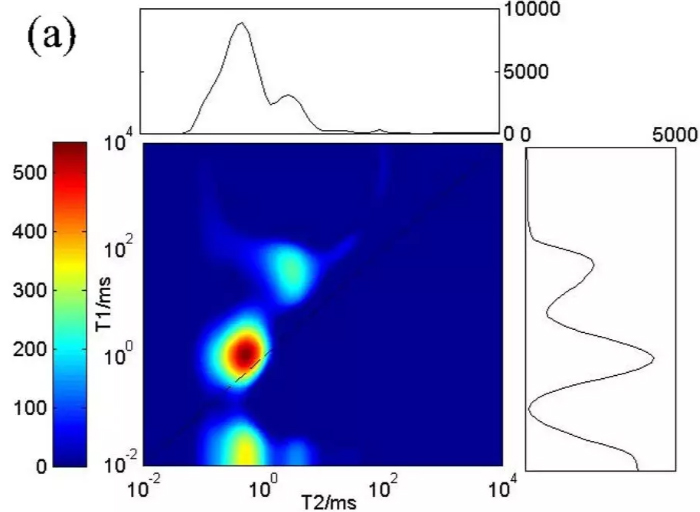In the late 20th century, the development of nuclear magnetic resonance (NMR) technology was advancing by leaps and bounds, which attracted worldwide attention for its profound theoretical connotation, advanced technical methods, and wide application range. In China, rock core NMR analyzer has been used in medical diagnosis, molecular spectroscopy and other fields earlier, while its application in the field of oil and gas exploration and development reflects the great wisdom and wisdom of the petroleum people. In our oil and gas field, the application of nuclear magnetic resonance technology can be roughly divided into two parts: rock core NMR logging and indoor NMR experiment.
From the perspective of the technical parameters of NMR, the most commonly used ones include relaxation time (mostly T2 relaxation), nuclear magnetic imaging (MRI) and two-dimensional NMR. T2 spectrum is believed to be the most familiar to everyone. NMR imaging technology can clearly show the dynamic changes in the development process, such as using NMR to explore the distribution of residual oil during water flooding. Two-dimensional NMR uses not only one parameter T2, but two parameters T1-T2 or T2-D.
Rock core NMR analyzer detects the hydrogen nuclear signal. If oil and water are present at the same time, it is difficult to distinguish the oil and water signals only through the T2 spectrum. Therefore, the advantages of two-dimensional nuclear magnetism are reflected. The figure below shows the cores collected from tight oil reservoirs saturated with water and light oil respectively. The vertical axis is T1, and the horizontal axis is T2. Obviously, the signals of water and oil fall in different zones on the two-dimensional NMR spectrum. For heavy oil, gas, etc., similar methods can also be used to build such a pattern

In terms of reservoir evaluation, the rock porosity, permeability, wettability, oil and gas saturation, movable fluid saturation and other parameters obtained by rock core NMR analyzer provide scientific basis for oilfield reserves calculation and productivity evaluation.
 NIUMAG
NIUMAG